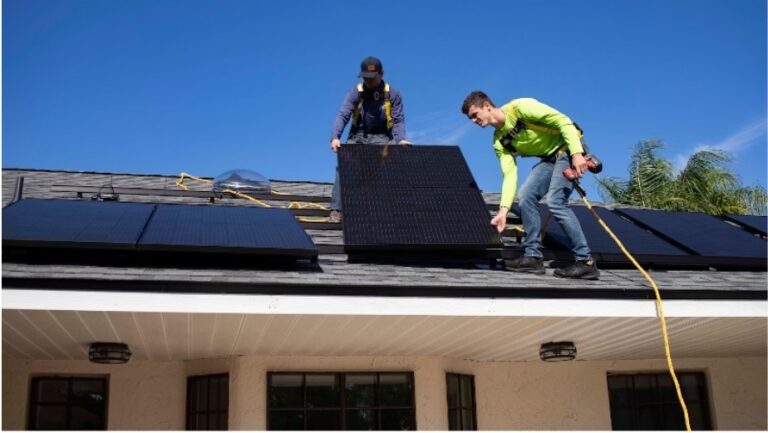
Solar panels are a great way to harness energy from the sun, but when you live by the coast, you have a few extra challenges to consider. Coastal homes face unique issues like salt corrosion and strong winds that can affect the performance and lifespan of solar panels. Soly, a leading name in the solar industry, has solutions tailored to these challenges. In this guide, we’ll explore how to effectively install and maintain solar panels in coastal environments. Understanding these challenges will help you make the most of your solar investment.
Understanding Coastal Environmental Factors
Coastal environments bring their own set of challenges for solar panels, mainly due to salt exposure and high winds. Salt in the air, carried by sea breezes, can settle on solar panels, leading to corrosion of the metal components. This corrosion can reduce the efficiency of your solar panels over time, making them less effective at converting sunlight into electricity. Additionally, coastal areas are often prone to strong winds, especially during storms or hurricanes. These winds can cause physical damage to solar panels, especially if they are not properly secured. Understanding these factors is the first step in ensuring your solar panels last longer and perform better in coastal areas.
Material Selection for Coastal Solar Panels
When it comes to choosing the right solar panels for coastal homes, the materials used are crucial. Solar panels made with corrosion-resistant materials, like anodized aluminum frames and tempered glass, are better suited for coastal environments. These materials can withstand the harsh conditions of salt and wind much better than standard solar panels. Protective coatings can also be applied to enhance durability. These coatings help to prevent salt from sticking to the surface and causing corrosion. When selecting solar panels, it’s important to consider not just the initial cost but also the long-term benefits of choosing materials that will last longer in a coastal environment.
Design and Installation Considerations
Proper design and installation are key to ensuring your solar panels can withstand the challenges of a coastal environment. One important consideration is wind load calculations. This involves assessing how much wind your solar panels will need to withstand, based on local weather patterns and building height. Mounting solutions are also critical; for coastal homes, it’s important to use mounts that are specifically designed to handle high winds. These might include hurricane-rated brackets or roof-integrated systems that offer more stability. Additionally, the orientation and positioning of your solar panels can help minimize the impact of salt and wind, making your system more efficient and durable.
Maintenance and Longevity
When it comes to maintaining your solar panels, especially in coastal regions, a proactive approach is key to ensuring their long-term performance. The salty sea air and strong coastal winds can accelerate wear and tear on your panels, making regular inspections and upkeep essential. Incorporating routine checks into your maintenance schedule allows you to identify and address early signs of salt corrosion or wind-related damage before they become significant issues.
Cleaning your solar panels is not just about aesthetics; it’s about preserving their efficiency. Salt deposits that accumulate over time can significantly reduce the panels’ ability to capture sunlight. To prevent this, it’s crucial to clean the panels regularly using soft brushes and mild cleaning solutions that won’t scratch or damage the delicate surface. Additionally, rinsing the panels with deionized water can help remove any residual salt and other contaminants.
Beyond cleaning, consider implementing preventive measures to protect your investment further. Installing windbreaks or protective covers can shield your panels from the harshest coastal elements, reducing the risk of damage. These steps, combined with regular maintenance, will help ensure that your solar panels not only survive but thrive in a coastal environment, providing reliable energy for years to come.
Cost Implications
The cost of installing solar panels in coastal areas may be higher due to the need for specialized materials and installation techniques. However, these initial costs can be offset by long-term savings. Coastal-specific solar panels are more durable and require less frequent maintenance, which can save you money over time. Additionally, installing durable, wind-resistant solar panels may lower your homeowners’ insurance premiums, as they are less likely to be damaged during storms. It’s important to consider both the initial investment and the long-term financial benefits when deciding on solar panels for your coastal home.
Parting Words
In summary, installing solar panels in coastal areas requires careful consideration of unique environmental factors like salt corrosion and high winds. By choosing the right materials, ensuring proper installation, and maintaining your system regularly, you can maximize the efficiency and lifespan of your solar panels. The initial investment in coastal-specific solar panels may be higher, but the long-term benefits, including lower maintenance costs and potential insurance savings, make it worthwhile. Whether you’re looking to save on energy costs or contribute to a greener environment, solar panels are a viable option for coastal homes. With the right approach, you can enjoy the benefits of solar energy even in the challenging conditions of a coastal environment.